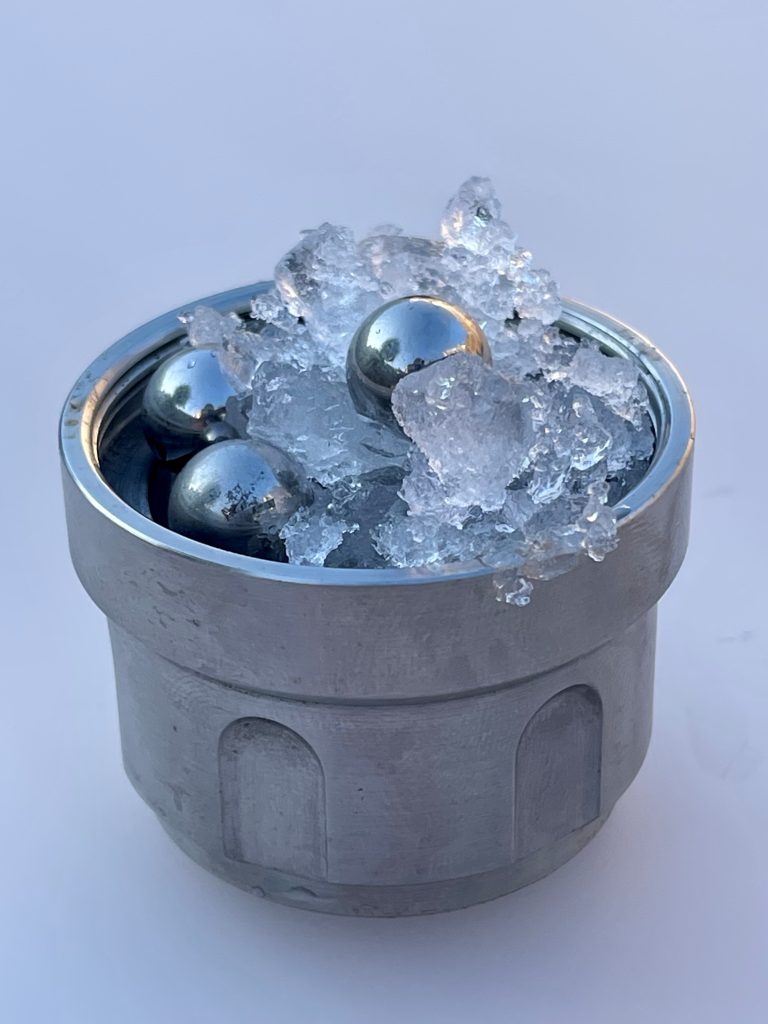Medium-density amorphous ice

A collaboration between scientists at UCL and Cambridge has led to the discovery of a new form of ice that more closely resembles liquid water than any other. It may hold the key to understanding this most famous of liquids and may play a crucial role in the icy moons of the solar system.
The new form of ice is amorphous. Unlike ordinary crystalline ice where the molecules arrange themselves in a regular pattern, in amorphous ice the molecules are in a disorganised form that resembles a liquid. Amorphous ices have long been suggested as models for liquid water. Until now, there have been two main types of amorphous ice: high-density and low-density amorphous ice. As the names suggest, there is a large density gap between them, and the density of liquid water lies in the middle. This density gap has been a cornerstone of our understanding of liquid water.
The new form of amorphous ice discovered has the same density as liquid water (unlike all other ices), and very closely resembles liquid water! The team named the new ice medium-density amorphous ice (MDA). They created MDA in experiment by using a technique called ball-milling, which put simply, shakes ordinary crystalline ice very hard. They also achieved an atomic-scale model of MDA in computer simulation – this allowed them to uncover remarkable similarities between MDA and liquid water.
The discovery of MDA raises many questions on the very nature of liquid water. Excitingly it may also exist in the icy moons of Jupiter and Saturn, where it could play a role in activating tectonic motions.
Authors: Alexander Rosu-Finsen; Michael B. Davies; Alfred Amon; Han Wu; Andrea Sella; Angelos Michaelides; Christoph G. Salzmann
